
|
| Ninos De Los Andes |
 |
 |
| Charango: A string instument that developed as a result of Spanish influence. The Charango is a direct descendent from the lutes brought to the Andes in the sixteenth century. Sometimes made with the shell of an Armadillo, the Charango uses ten strings (five pairs) and is usually tuned in open A minor. |
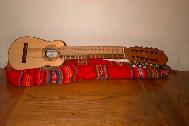 |
| The Instruments |
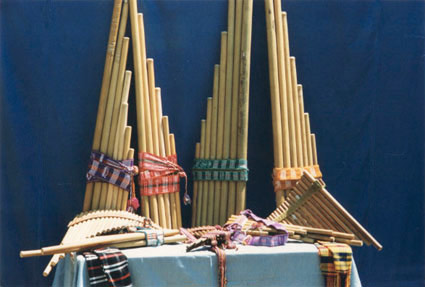 |
| Zampona or Panpipe: Panpipes have two seperate rows of pipes open at one end and closed at the other, with each row containing every other note on the musical scale. Usually, there is a row of six pipes, called the Ira, and one of seven known as the Arca. The pipes are held together by two or more straps running across the width of the insrument and tied with string. |
| Quena: The quena is an Andean instrument of pre- millenium origin. Thanks to it's musical diversity. (being tunable and adaptable in many ways. it can be made or wood or bamboo. Its ancestors were made from clay, stone or bone. A quena can perform in 3 octaves. Most quena are produced in the key of G Major. Quenas come in many sizes a larger base quena is called a Quenacho, and a smalller quena a quenilla. My concert quena is made of bone. |
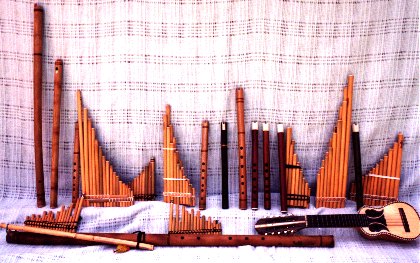 |
 |
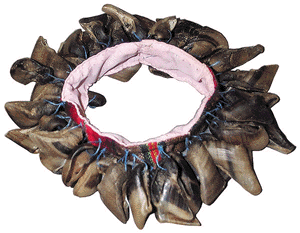 |
| The Chajchas: (Chullus in Bolivia) is a woven ribbon to which there are tied several goat or pig hooves. When shaken the sound produced suggests the sound of the wind or falling rain. |
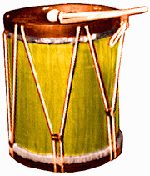 |
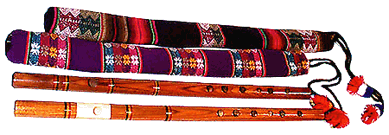 |
 |
 |
| Ronocco: A larger bass Charango. |
| Bombo: A hollowed tree trunk. With a goat skin over each end. Bombo come in many sizes. |
| Panflute: The panflute is one of the oldest musical instruments. Its origin dates back to the beggining of civilization. The panflute was made from hollow animal bones held together by calf rope.. They come in many scales and keys. |
| Tranverse flute: A tranverse flute has similar tuning to a quena it is easy to play and has a deep warm sound. |
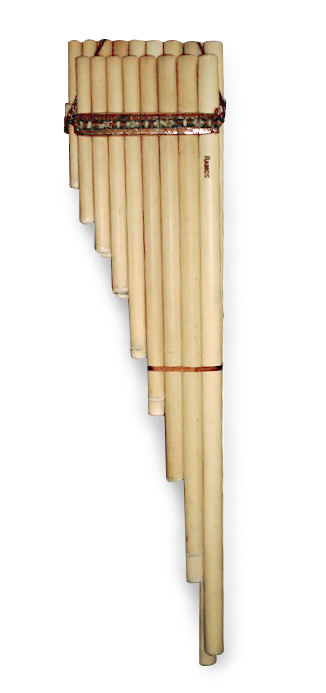 |


